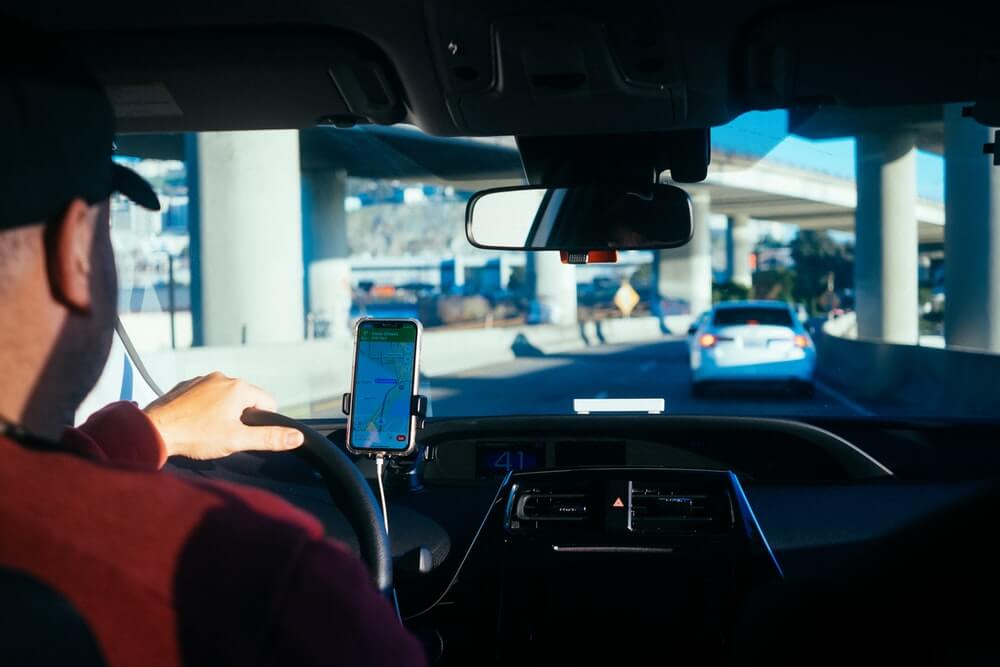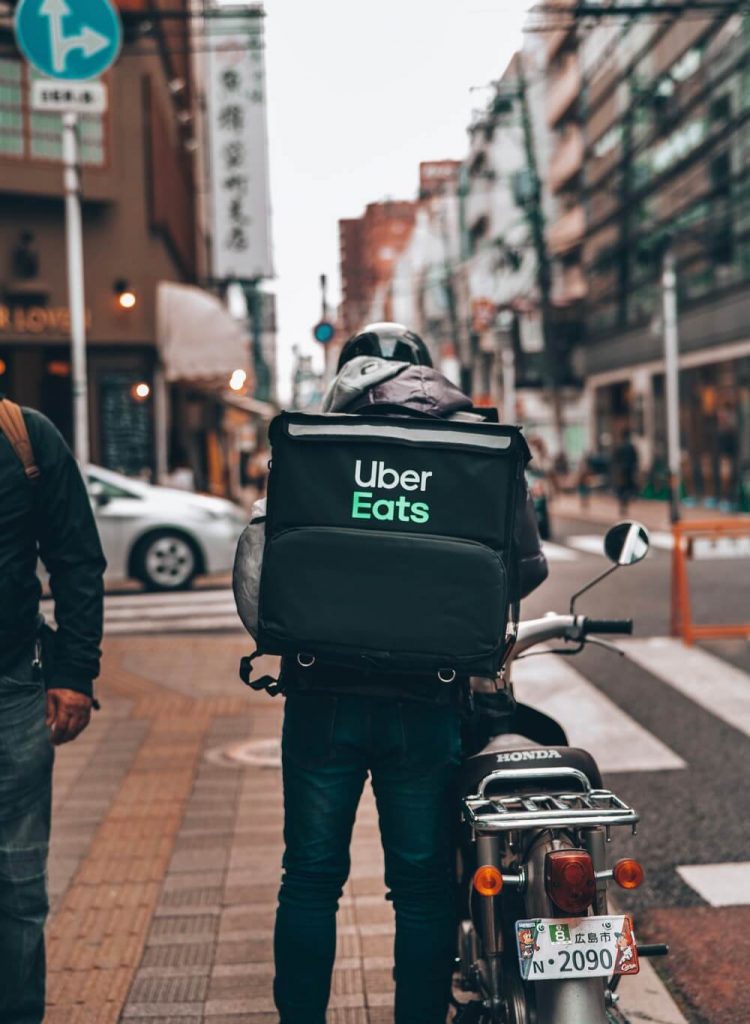We all appreciate the convenience of an Uber when we’re stranded somewhere after a night out. But how exactly do these digital platforms ensure their workers are protected and paid enough?
This is an increasingly hot topic as Australia’s gig economy has boomed since the beginning of the pandemic. In particular, app-based transportation and delivery companies such as Uber, Didi and DoorDash have enjoyed rising popularity in recent years. According to an Actuaries Institute report, the gig economy grew nine-fold between 2015-2019, worth $6.3 billion in 2019. Even Amazon has stated that their salaried truck drivers will be soon replaced by gig workers in their new “Amazon flex” initiative.

First of all, what is a gig worker? Fair Work Australia defines the gig economy as being comprised of companies that use ‘mobile apps or websites to connect individuals providing services with consumers.’ The gig economy also goes by names such as the “platform” or “app” economy, or the “sharing” economy or even the “on-demand workforce.”
Proponents of these gig-style jobs praise their flexibility and convenience. People are able to take these positions easily, either as a primary source of income or supplementary to another job. This style of work allows people to instantly enjoy the perks of essentially ‘being their own boss’ as independent contractors for these companies.
A key appeal for gig workers is the extremely low barriers to entry, granting people a relatively hassle-free means to supplement their income when they need it. Have a car? You can provide a taxi service with Uber or Didi. No car? No worries! You can deliver food for UberEats and DoorDash by bike or even on foot. These flexible, platform-based work opportunities provide individuals with a convenient and user-friendly means to supplement their income. At the beginning of the pandemic, this was a valuable source of supplementary income for workers experiencing underemployment due to lockdowns.
The benefits to these positions are clear, as the marketing teams of these platform-based companies are quick to point out. DoorDash markets itself as a way for young people to fund their lifestyles without the hassle of missing out on trips with friends or dealing with an annoying boss. Uber’s catchy “too busy earning” ad depicts people being magically lifted from a sedentary, couch-potato lifestyle into a car, destined to use their previously ‘dead’ time productively by delivering food and earning money.
However, what are these companies leaving out of the marketing spin? Are these positions really a good deal for gig workers?
The first issue that may come to mind is pay. Uber drivers keep less than 75% of their weekly fare total, with an average of $33.15 per hour before the 27.5% cut is taken. However, this doesn’t factor in additional costs such as petrol, car wear & tear, insurance, and paid leave, which are traditionally covered for real ‘employees.’ Petrol is even more of a concern, given rising costs in Australia and abroad, forcing some Uber drivers to quit the platform as profitability drops. As part of a submission to the Select Committee on Job Security, an inquiry that led to amended minimum wage laws for Australian seasonal fruit pickers, Uber commissioned studies that found the average hourly wage of Uber drivers, factoring in associated expenses, was $21. Uber admitted that this was below the minimum wage of casual workers in Australia. More damning studies conducted by the Transport Workers’ Union of Australia (TWU) calculated via two surveys of rideshare gig workers earned $10.42 per hour after costs, and 74% of surveyed food delivery workers said they struggled to pay their bills and buy groceries. It is clear that the flexibility and convenience offered by these ‘gigs’ come with a fairly hefty price tag when compared with regular minimum-wage jobs.
The Amazon Flex initiative sees drivers paid in blocks where they receive minimum earnings of $108 for 4 hours, working out to be $27 an hour. This followed a bid by the TWU to ensure that Amazon drivers are awarded an enforceable minimum pay. Even though this is above minimum wage, after factoring in things like sick leave and paid annual leave, fuel, vehicle wear and tear costs and personal insurance, the benefits start slipping away for workers. The replacement of salaried truck drivers, who enjoy the full swathe of worker protections, with gig workers could be seen as nothing more than a cost-cutting measure for the multi-national, and a way to allow Amazon to absolve themselves of responsibility for their workers’ welfare by positioning them as ‘independent contractors.’ However, as a result of the TWU bid, Amazon flex drivers will be paid up to $37.80 by July 2025, which will go further to offset personal costs.
Long-term financial stability is set to be an issue for workers who rely on gigs as their primary income source. The aforementioned Actuaries Institute report found, in a simulation of superannuation outcomes of typical gig workers, that “workers who spend five to 10 years of their productive labour years participating in the gig economy may be between $48,000 or $92,000 worse-off in superannuation savings at retirement” in comparison to employees earning minimum wage. According to the associated media release, Actuaries Institute Chief Executive Elayne Grace stated that “it is increasingly important that we better understand the risks to workers” within the gig economy, and how these risks “might impact on future public policy.”
The lack of employee protection offered within the gig economy is yet another point of concern. Because gig workers are considered contractors and not employees by these corporations, they don’t receive any protection under workplace insurance. This came to a head in 2020 when Uber driver Dede Fredy was involved in a fatal car crash, leaving his wife and young child in Bali heartbroken and without compensation. Fredy had left to work in Australia to secure his son’s future, but without compensation that regular employees would be entitled to, things now remain tragically uncertain for his family. In 2020, there were 5 delivery rider deaths. 2021 national secretary of the TWU Michael Kaine argued that the current system of gig workers is exploitative, with workers “dying without these companies blinking.” It’s a little dystopian, if you ask me, and a far cry from the gig economy that delivers a utopic replacement of the 9-5 with unlimited flexibility and work-life balance.
As cost of living remains a prevalent issue for Australians, whether these gigs can be considered exploitative or not can all be seen as a matter of privilege. For a student looking for a flexible gig on the side to supplement their disposable income, gigs are an easy and accessible option. It’s also a means for people experiencing underemployment to even out their income sources. But anyone hoping to fully make a living off these gigs is set to be disadvantaged in comparison to their salaried counterparts, in terms of both pay and worker protection.
Movements to enshrine stronger protections for gig workers have gained momentum internationally. A landmark Dutch court ruling found that Uber drivers were employees and not contractors, finding that the “legal relationship between Uber and these drivers meets all the characteristics of an employment contract.” Uber responded by saying that this went against drivers, and that “drivers don’t want to give up their freedom to choose if, when and where to work.” Supporters of the ruling say that it would lead to improved worker protections and pay, ensuring that they got paid minimum wage.Whether or not delivery and rideshare drivers are to be considered employees or independent contractors in terms of the protections and benefits they receive is “yet to be definitively tested in Australian Courts.” Time (and legal proceedings) will tell if Australia’s gig workers are entitled to the same rights as salaried employees.

